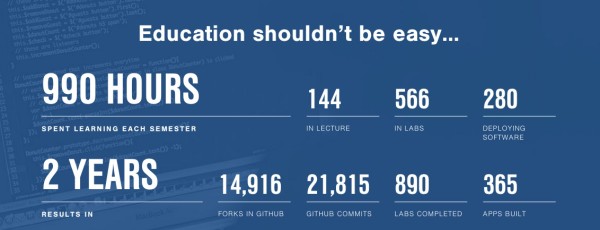How to learn efficiently
I am convinced that much of the gap between the best college students and the worst is explained by study habits. Frankly, most students study poorly. To make matters worse, most teachers are incapable of teaching good study habits.Learning is proportional with effort
Sitting in a classroom listening to a professor feels like learning… Reading a book on a new topic feels like learning… but because they are overwhelming passive activities, they are inefficient. It is even worse than inefficient, it is counterproductive because it gives you the false impression that you know the material. You can sit through lecture after lecture on quantum mechanics. At some point you will become familiar with the topics and the terminology. Alas you are fooling yourself which is worse than not learning anything.
Instead, you should always seek to challenge yourself. If some learning activity feels easy, it means that it is too easy. You should be constantly reminded of how little you know. Great lectures make it feels like the material is easy: it probably is not. Test yourself constantly: you will find that you know less than you think.
Some students blame the instructors when they feel confused. They are insistant that a course should be structured in such a way that it is always easy, so that they rarely make mistakes. The opposite is true: a good course is one where you always feel that you will barely make it. It might not be a pleasant course, but it is one where you are learning. It is by struggling that we learn.
On this note, Learning Style theory is junk: while it is true that some students have an easier time doing things a certain way, having it easier is not the goal.
There are many ways to challenge yourself and learn more efficiently:
- Seek the most difficult problems, the most difficult questions and try to address them. It is useless to read pages after pages of textbook material, but it becomes meaningful if you are doing it to solve a hard problem. This is not news to Physics students who have always learned by solving problems. Always work on the toughest problems you can address.
- Reflect on what you have supposedly learned. As an undergraduate student, I found that writing a summary of everything I had learned in a class was one of the best ways to study for an exam. I would just sit down with a blank piece of paper and try to summarize everything as precisely as possible. Ultimately, writing your own textbook would be a very effective way to learn the material. Teaching is a great way to learn, because it challenges you.
- Avoid learning from a single source. Studying from a single textbook is counterproductive. Instead, seek multiple sources. Yes, it is confusing to pick up a different textbook where the terminology might be different, but this confusion is good for you.
Interleaved study trumps mass study
When studying, many people do not want to mix topics “so as not to get confused”. So if they need to learn to apply one particular idea, they study to the exclusion of everything else. That is called mass (or block) practice.
Course material and textbooks do not help: they are often neatly organized into distinct chapters, distinct sections… each one covering one specific topic.
What researchers have found is that interleaved practice is far superior. In interleaved practice, you intentionally mix up topics. Want to become a better mathematician? Do not spend one month studying combinatorics, one month studying calculus and so on. Instead, work on various mathematical topics, mixing them randomly.
Interleaved practice feels much harder (e.g., “you feel confused”), and it feels discouraging because progress appears to be slow. However, this confusion you feel… that is your brain learning.
Interleaved practice is exactly what a real project forces you to do. This means that real-world experience where you get to solve hard problems is probably a much more efficient learning strategy than college. Given a choice between doing challenging real work, and taking classes, you should always take the challenging work instead.


